
As a beginner plant owner, I was so terrified of drying out my houseplants that I would cavalierly water them every day, no matter the species or the season. In retrospect, of course, I was overwatering, but that’s a story for another time. Imagine the expression on my face when I saw white and yellow bubbles growing in my houseplants, one after another.
Some of the bubbles would pop, and others would grow into yellow mushrooms, yuck! Understandably, I was terrified, and if it’s the first time you see these fungus balls or mushrooms pop up seemingly out of nowhere, you may be as well. Fear not, these mushrooms will not harm your plants, but you may want to tread carefully, as they could harm dogs and young children.
Here’s what you need to know about mushrooms growing in the soil of your houseplants or garden.
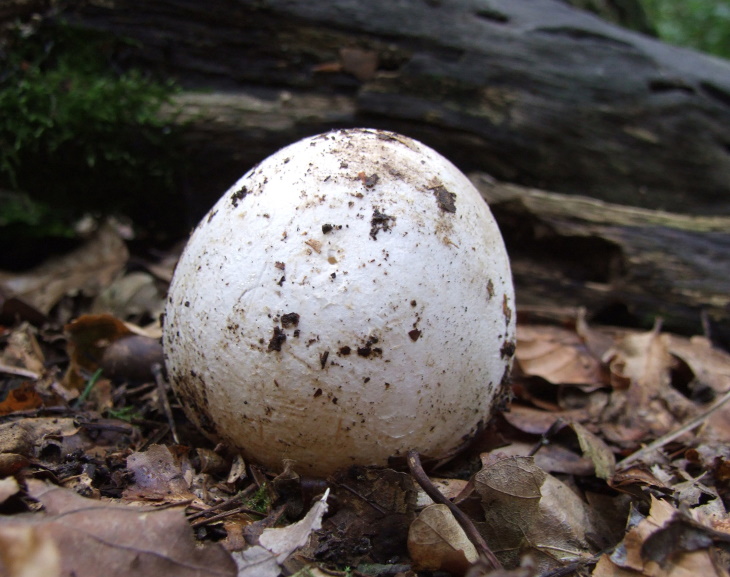
Chances are, the mushrooms you now see appearing have been growing and developing in your soil for a long time. Mushrooms develop from tiny spores that must have been there in the potting or gardening mix when you purchased them.
From the tiny spores, the mushroom grows into an underground mass called a mycelium, and the aboveground mushrooms we all see and recognize only appear occasionally, and are referred to as fruiting bodies. This usually happens when the weather is hot and the soil is rather wet, which explains why I started seeing mushrooms appear in the soil of my plants when I was overwatering them. Mushrooms also tend to appear in the garden when the humidity increases, so you’ll frequently see them pop up after a summer drizzle.

These visible mushrooms appear to spread spores and multiply, so removing them from the soil as quickly as you can is a good idea. Some mushrooms can also be poisonous when ingested, so make sure to remove them if dogs or kids have access to infected potted plants or areas in the garden.
That said, the majority of mushrooms growing among plants will not harm the plants themselves. As Dr. Greg Mueller, a mycologist from the Chicago Botanic Garden told RD, “I call mushrooms nature’s recyclers,” alluding to the fact that the underground part of the mushroom actually decomposes dead material and turns it into nutrients for your plants. So, in most cases, if your plant is dying, it's for a different reason.
The only exception is when you notice that your plants have started to appear weaker and smaller, and there are mushrooms nearby. This means that the fungus has expanded so much that it started pushing out the plant.
Related article: How to Identify and Manage 10 Common Plant Diseases
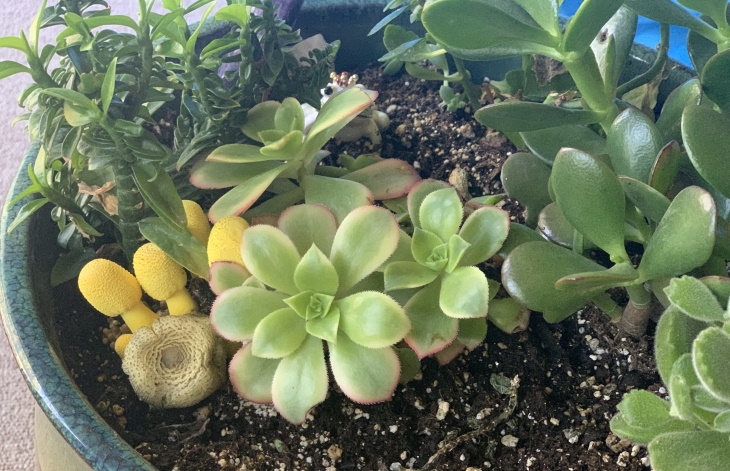
Pick the mushroom by wrapping it in a damp paper towel and a plastic bag. Bring the dog and the mushroom to the veterinarian, as even some mushrooms that are not poisonous to humans are dangerous to dogs. You can take a photo of the mushroom from all angles if you’re not willing to touch it.
First and foremost, avoid using packaged fungicides. These products do not work against ordinary mushrooms, only fungal diseases like mildew, but they will damage the beneficial organisms in your soil.
Instead, just pluck the mushrooms and scale down on the watering. If you want to eradicate the underground part of the mushroom, follow these tips:
1. Dig up the mushroom, including the underground parts you see.
2. Seal the mushroom in a plastic bag to prevent the spread of spores. Throw away the bag.
3. Fill a spray bottle with water and add a few drops of dish soap. Spray this liquid on the affected area to kill any traces of the fungus.
To prevent a fungal problem in your garden, make sure to clean away any dead foliage or decomposing matter from the soil. You can also water plants more sparingly to essentially dry out the mushrooms.
In severe or recurring cases, simply repotting the plant in fresh soil will do. Make sure to sterilize the pot in boiling water before you repot.
H/T: RD
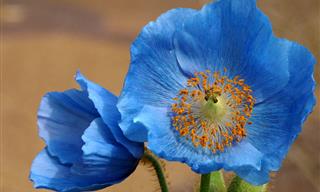
Let Your Eyes Rest on These Gorgeous Sapphire Flowers
Pick any of the flowers on this list and add a splash of cheerful baby blue or an accent of mysterious indigo to your garden.

Houseplant First Aid - Reviving a Dried-Out Plant
Want to try and resuscitate a dried-out plant? Here’s your step-by-step guide.

The BEST Plants to Display in the Living Room
An abundance of plants is an evergreen trend in interior design. See which plants are best suited for a living room setting and learn to style them.
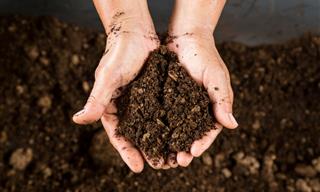
An Express Guide to Plant Fertilizers
There are 4 main types of plant fertilizers, but which one’s best for your garden?

8 Adorable Mini Indoor Plants to Liven Up Any Small Space
These low-maintenance houseplants aren’t just cute, they hardly take up any space!
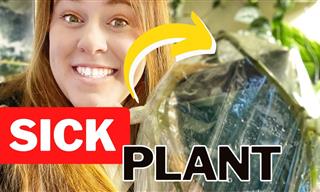 6:33
6:33
Do This to Revive a Drying Houseplant
Whenever one of your houseplants suddenly looks ill, do this trick.

These Cool Charts Will Make Your Christmas So Much Better
These cool charts will make your Christmas so much better.

These 6 Secrets Will Ensure You Look Divine in any Photo
This fantastic guide will reveal some basic errors that people make in photographs and how to improve them, ensuring you look great every time!

9 Ways to Keep Your House Clean Using Just a Simple Lime
Limes are just as good as lemons when it comes to cleaning. Here are 9 great ways to clean with them.

Save Money with These 15 Great Fuel Economy Tips
These 15 great tips will help improve your fuel economy, saving you money in the process.

7 Common Bank Scams and How to Avoid Them
Banking scams continue to evolve with time, but with proper knowledge you can learn to avoid them.

How Woodworking Can Create Additional Revenue for You
The best woodworking business courses teach everything from basic woodworking techniques to advanced marketing strategies.

Cleaning With Baking Soda Can Really Damage These Surfaces
Even baking soda isn’t universal, and using it to clean certain surfaces, like wood, marble, and glass, can damage them...

DIY: Make Your Own Chemical Free Gel Air Freshener
Gel air fresheners smell wonderful, but they're often filled with chemicals. Make your own chemical-free air freshener with this DIY.
 2:28
2:28
8 Super Handy Grocery Bag Tips You Have to Try
Whether you prefer paper or plastic, there are enough hacks here to really boost your bag usage. These tips will save you time, money and space. Perfect!

Guide: How to Get Rid of 18 Bad Odors in the House
Familiarize yourself with the 18 items that can help eliminate, neutralize, prevent, and mask any unpleasant smells in every area of your home.

6 Popular Grocery Items You Should Definitely Stop Buying
Many companies have become masters at selling us stuff we don't need. Here are some of the worst offenders.

Don't Throw Out Old Makeup! Here's What You Can Do...
12 helpful uses you can put your expired or unsuitable makeup items

Guide: How to Reduce the Risk of Accidents at Home
As you age you will find yourself spending more time at home. This guide gives you tips and ideas for making your home safe, comfortable and easy to navigate.

15 Reasons to Never Throw Away Used Corks Again!
There's no limit with what you can do with a simple collection of corks. Make your used corks useful again with these brilliant DIY ideas.

10 Household Items You Should Disinfect Every Day
Here is a list of 10 essential household things that you simply must disinfect during the winter months.

20 Foods That Should Be Kept Out of the Refrigerator
The refrigerator allows us to keep food fresh for longer, but there are certain foods, such as the 20 here, which are not meant for the cold...

How to Clean Your Dishwasher's Filter so It's Like New
Learn not only hot to check your dishwasher's filter, but also how to clean it like new!

Guide: 10 Stunning Hairdos You Can Do Yourself at Home
These simple yet impressive hairstyles will leave you feeling confident and stylish for any occasion.
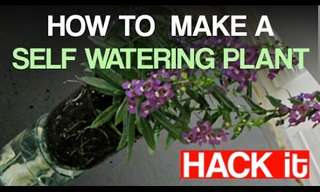 1:47
1:47
Brilliant: How to Make a Self-Watering Plant!
How to make your plant water itself, saving you a lot of hassle and meaning you'll never again forget to water them correctly.

How to Deal With an Angry Person in Your Life
This is a video guide to show you how to deal with an angry person in the best way possible.
 15:13
15:13
Cleaning Guide: The Correct Way to do Daily Chores
We could all do with a couple of life-savers every now and then. Check these out!
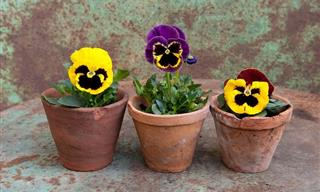
8 Hypoallergenic Indoor Plants for Easy Breathing
We have discovered eight plant varieties that are recommended for growing and will keep allergies at bay!
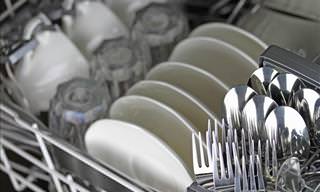
This is the Right Way to Load a Dishwasher For Best Results
What's the best way to load your dishwasher? Find out in this guide.
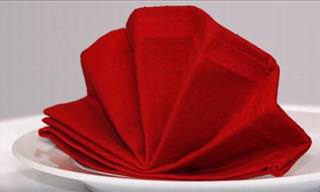
Spruce Up Your Dinner Table With These Napkin Techniques
Holidays are always a time of cheer. Spruce up your dining table with these 8 easy-to-try napkin techniques.

Seniors Living Alone Should Always Have These Items
Want to make life easier on your elderly loved one who lives alone? Check this list.

7 Tips to Maintaining a Life-Long Friendship
Advice from life-long friends about how to maintain a strong friendship.

12 Great Advantages of Being Bald
You thought hair loss and going bald was a BAD thing? Well, think again, as we go over everything that's great about being bald!

Everything You Wanted to Know About Coffee...
Is coffee healthy? Is it addictive? Is there any way to reuse coffee grounds? Find the answer these question in this coffee themed collection

7 Items You Should Never Clean with Paper Towels
As useful as they are, paper towels are not fit for any task. Here are 7 items you should never clean with paper towels.

14 Surprising Uses for Binder Clips You've Never Thought Of
Binder clip – most people wouldn’t think this handy little clip can do more than just bind paper, but, as you’ll see below, it has many other uses.

DIY: Make Your Own Wall Stencil in 8 Easy Steps
Get a designer look for half the price. This easy DIY guide will show you how to make a beautiful wall stencil in 8 easy steps.

We Bet You're Not Aware of These Real-World Facts
Don't miss this random collection of interesting real-world facts from the world over that you are unlikely to have heard before

12 Foods You Must Add to Your Diet in Your 40s and Later
In this article, we’ll focus on 12 foods with proven anti-aging effects that are easy to find in stores and even easier to add into your diet

WATCH: Keep These Tips in Mind to Protect Your Art At Home
As everyone does, I'm sure you have pieces of art in your home that are precious to you. Here's how you can protect them for your prolonged enjoyment.
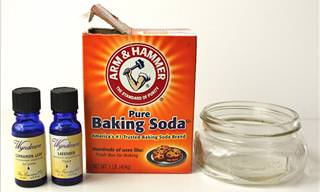
Make Your Home Smell Amazing with These 2 Ingredients
You can make your home smell absolutely amazing by using just these two ingredients. This video will show you how to make your own air freshener.

Make Cleaning Windows Less Tedious with This DIY Recipe
There is a quicker and more effective way to clean the windows in your house. Take a look at these two methods.
 3:38
3:38
Do You Know Why Wedding Rings Are Worn On the 4th Finger?
There's a specific reason why we all wear our wedding rings on our fourth fingers, and this informative video will explain the tradition behind it.

Learn 10 Simple Tricks For Regaining Control Of Your Body!
We've all experienced laughing when inappropriate, crying uncontrollably, and even annoying hiccups. With these 10 tricks, you'll be able to regain control!
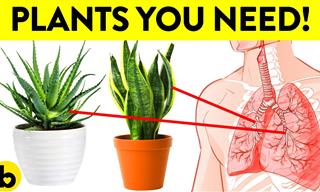 7:59
7:59
These Are the 8 Healthiest Plants To Have In Your Home
Houseplants have health benefits, from cleaning the air around you to boosting your mood. Learn which ones are the healthiest to have around.

Your Toothpaste Can Be More Harmful Than You Think
Stop using toothpaste that fills your body with nasty chemicals, and try making one of these natural versions instead.

With Age Comes Wisdom! Great Advice From People Over 50
Why get advice from a book when you can get great advice from a person over 50?


